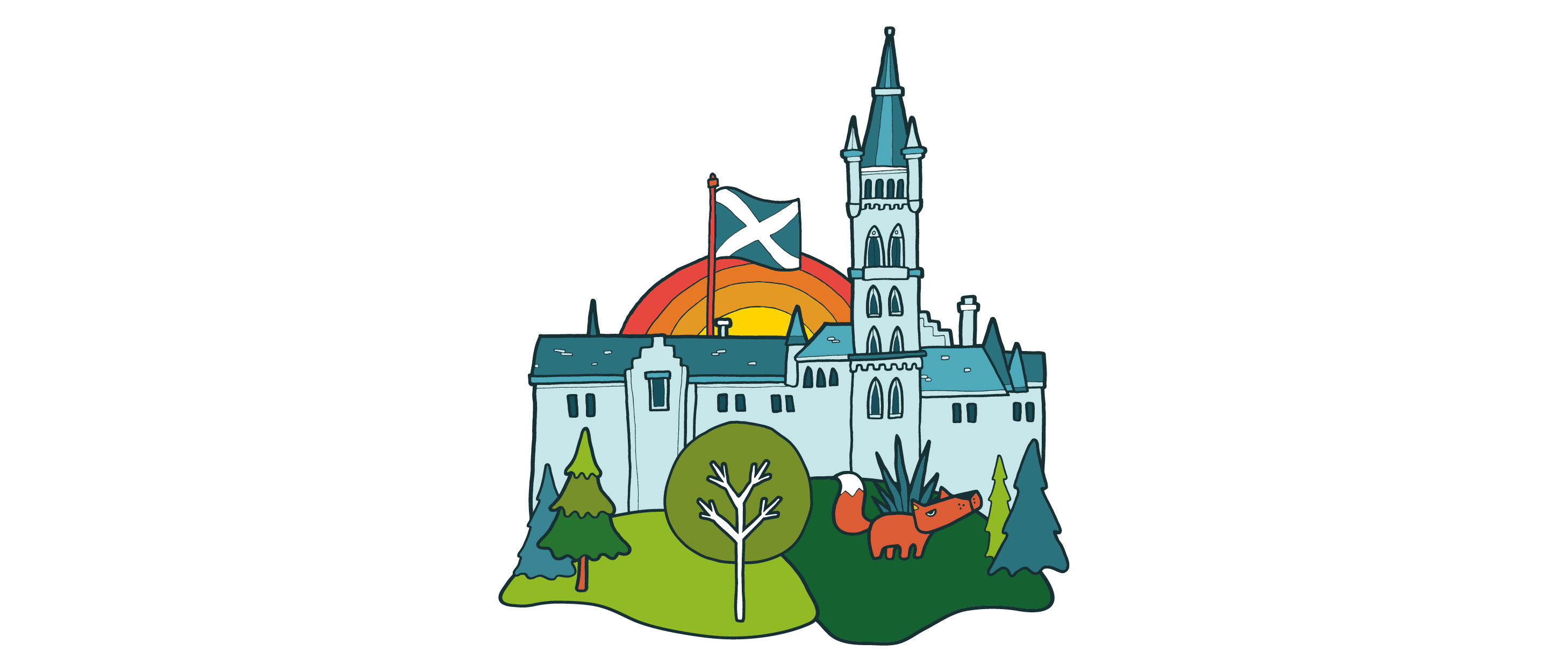Glasgow Science Festival in Action 2023
Glasgow Science Festival (GSF) 2023 ran from Thursday 1st to Sunday 11th June, with a packed programme of in-person events, under the theme ‘Glasgow’s Looking Forward’.
GSF in Action was delivered as a hybrid programme, with teaching and group work online then practice and delivery in-person. Three groups responded to the brief:
To support the GSF Director with the development of activities linked to this year’s festival theme ‘Glasgow’s Looking Forward’. These will be delivered at either the Glasgow Botanic gardens or Riverside Museum.
Energy Conservation
The energy conservation group created 2 activities to deliver at the Riverside Museum. Both activities focused on the concept of energy conservation and how it can never be lost – it can only be transformed into another form. Energy is used every day, by us, by our technologies, by nature! It comes in many forms and shapes, including, but not limited to, thermal, kinetic, chemical, electrical, and potential.
Activity 1: Dynamo
This group explored energy by using a special machine called a dynamo. A dynamo takes the energy from our muscles when we turn a handle and transforms it into something we can use: electricity! They then used the electricity to power different devices like an LED light bulb, an incandescent bulb, a speaker, and a heater. Participants learned about the different types of energy that are present and how they can be transformed into something we can use. In this activity the chemical energy turns into kinetic energy (movement of the wheel). Through the dynamo it turns into electrical energy, and it finally turns into light and heat.
Activity 2: Balloon Powered Vehicles
Participants were invited to build a model car using bamboo sticks, paper straws, cardboard wheels and balloons. To blow a balloon we need to use energy from our body and then, once the balloon is attached to the vehicle, the balloon’s energy can be used to power the vehicle and make it move. The car is propelled forwards by the air escaping from the balloon. Different sizes of balloons and wheels were provided to explore how car design affects how far the car will travel, and thus how much energy is used.
Dynamo
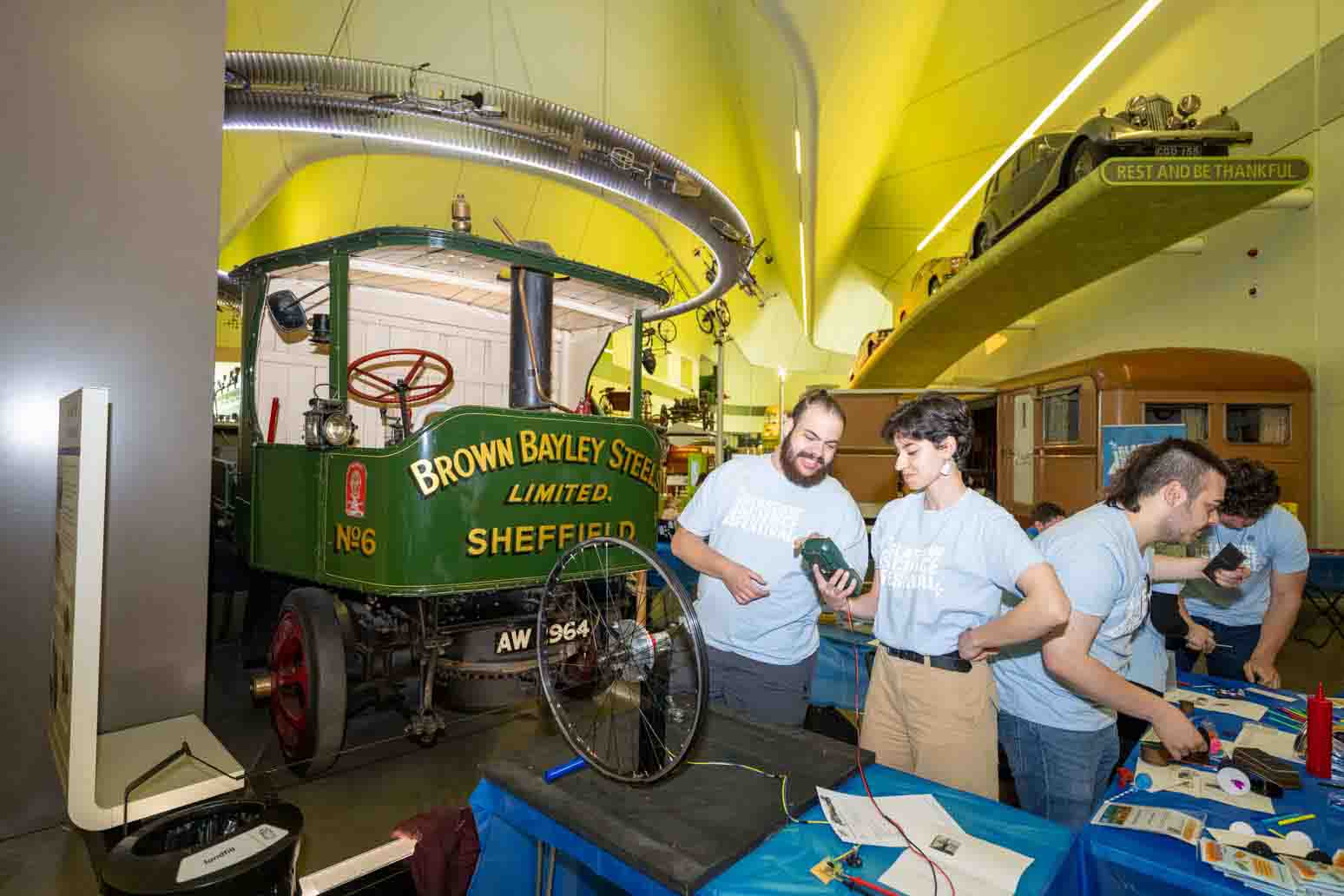
Balloon Powered Car
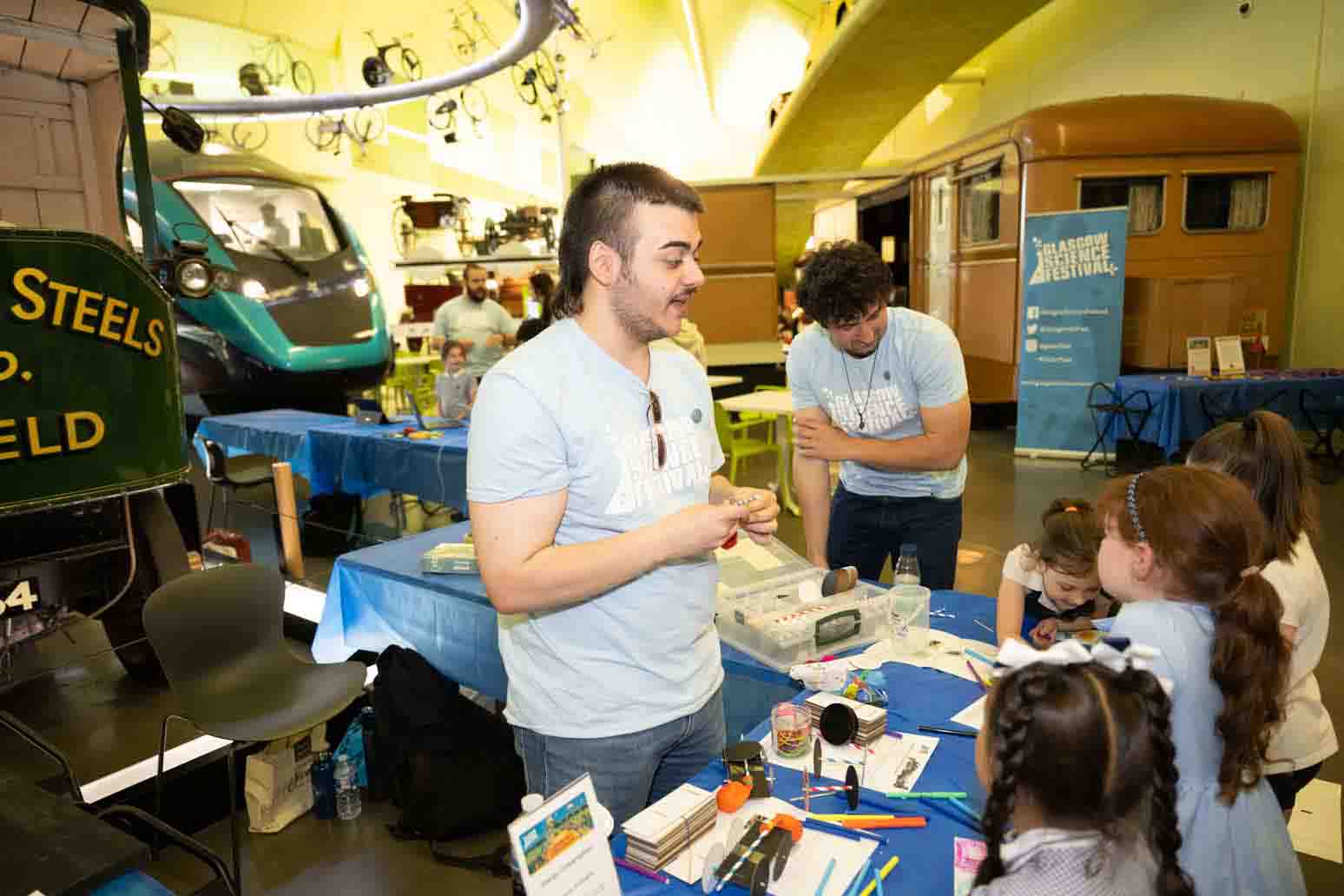
Thanks to Zach, Edoardo, Giorgos, Laura and Gaargi for a hands-on and fun set of activities.
River Kelvin Ecosystem
The River Kelvin ecosystem group created 2 activities to deliver at the Botanic Gardens. Both activities focused on the concept of ecosystem interactions and appreciating the role of different animals and plants in the River Kelvin catchment. Ecosystems are complex webs of interaction between living beings (biotic factors, including plants, animals, and bacteria) and non-living things (abiotic factors, such as sunlight, temperature and water, which form the habitat), cycling energy.
Activity 1: Creating Our Ideal Ecosystem
This group explored ecosystems by creating a mural of an ideal ecosystem. Participants were then invited to use templates to cut out and colour a range of animals that can be found on the River Kelvin. Animals included: otters, butterflies, ducks, fish and squirrels. The participants could discuss with the group where abouts on or around the River Kelvin each animal would be most likely to live.
Activity 2: Snakes and Ladders
A giant snakes and ladders board was created and placed in the Botanic Gardens. Participants could then roll a dice and progress along the board in the same way as the board game, however if they land on a square with either a snake or ladder they would then be asked a question. If answered correctly on a ladder tile they could move up the ladder, answer wrong on a snake tile and they would go back down the board. Answers could be discussed using a series of posters provided by the group.
An example question is: Some dead plants have attracted worms to your ecosystem as this is their favourite meal – this leads to important nutrients being delivered back into your ecosystem promoting healthy growth of living plants. What type of consumers are worms? (Answer below the images)
- Primary consumers
- Secondary consumers
- Decomposers
Snakes and Ladders Question
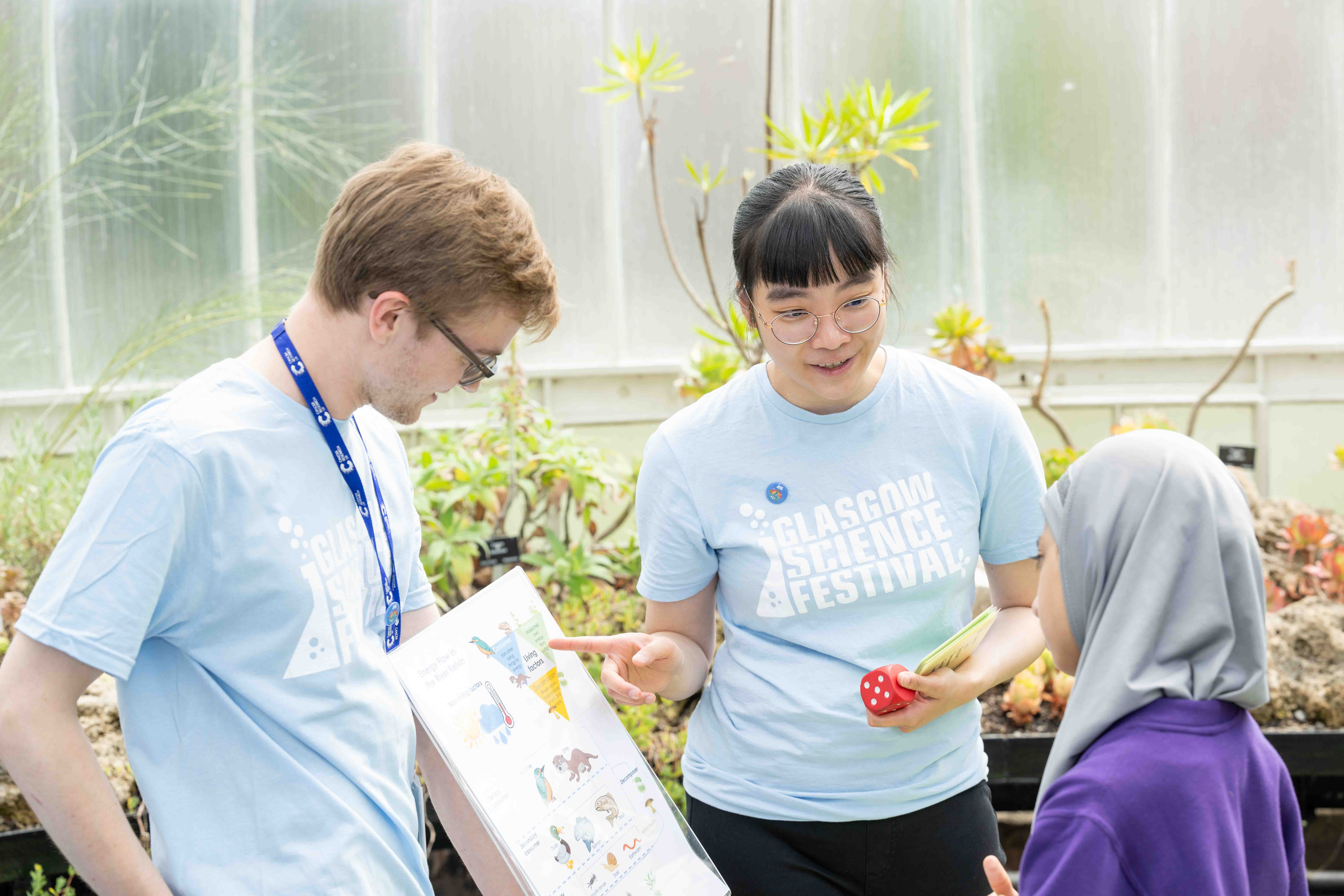
Group Photo
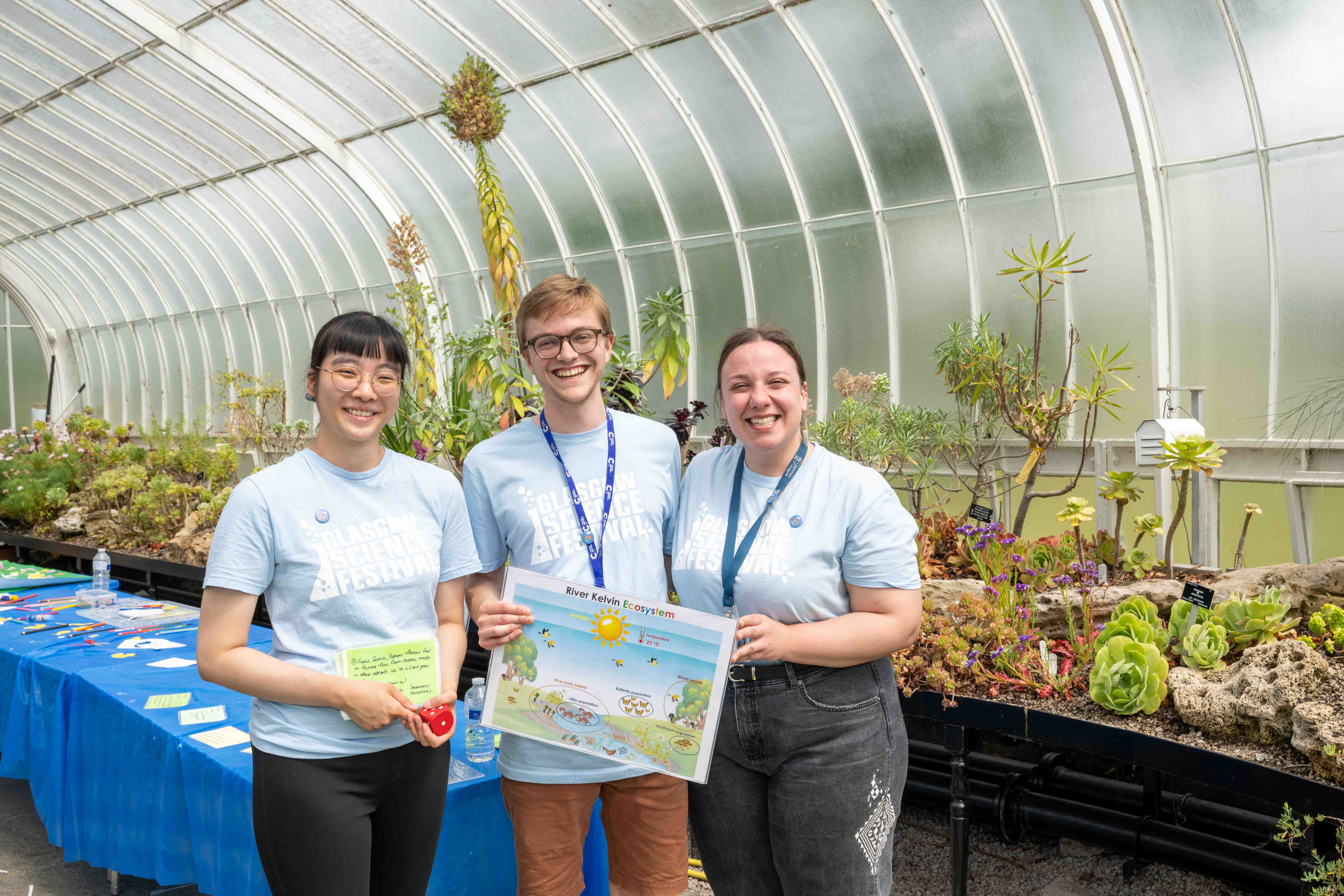
Correct answer: Decomposers
Thanks to Jodie, Jen, Ioanna and Rui for designing this innovative set of activities.
Test Your Turbines
The Test Your Turbines group created 2 activities to deliver at the Botanic Gardens. Both activities focused on the concept of wind energy and how wind turbines can generate electricity. Wind is air that is moving predominantly in a particular direction. Wind is caused by the sun heating up the air which rises upwards due to lower density leaving empty space below where cold air moves into causing wind. This is a powerful source of energy and can be harnessed for multiple purposes. Wind turbines work by converting kinetic (wind) energy into electrical energy that can then be used to power our homes.
Activity 1: Pinwheel Experiment
This group investigated whether the amount of blades on a pinwheel can affect the amount of power generated. The faster the wind turbines spin the more electricity in generated, this means turbine design needs to minimise drag whilst still remaining stable. The group provided participants with a 2-blade turbine and a 4-blade turbine to test which spun faster when a hairdryer is directed at them.
Activity 2: Craft a Pinwheel
Participants were invited to craft their own pinwheel out of paper, paper straws and brass fasteners. They were encouraged to get creative with their designs, shapes and colours.
Pinwheel Experiment
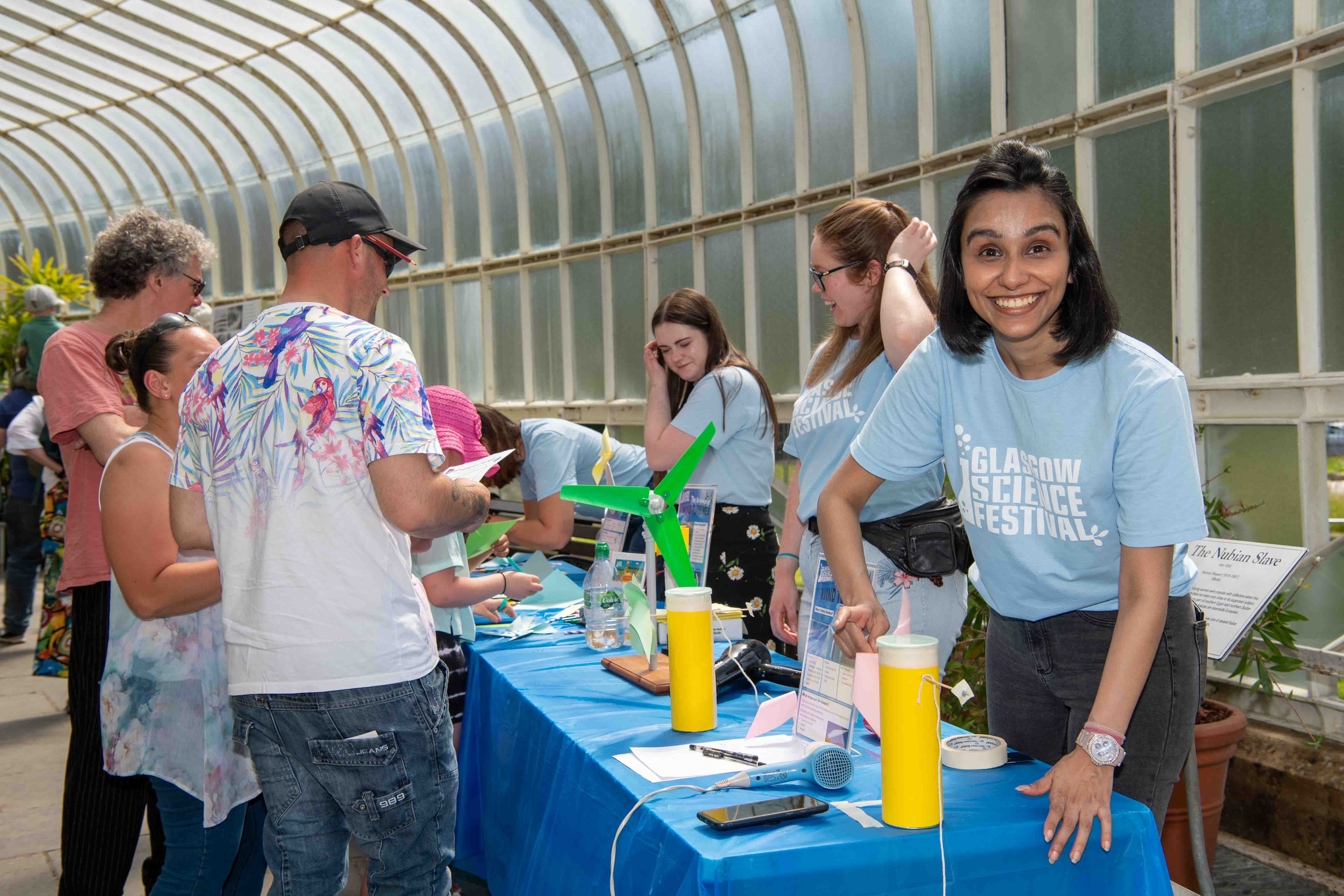
Craft a Pinwheel
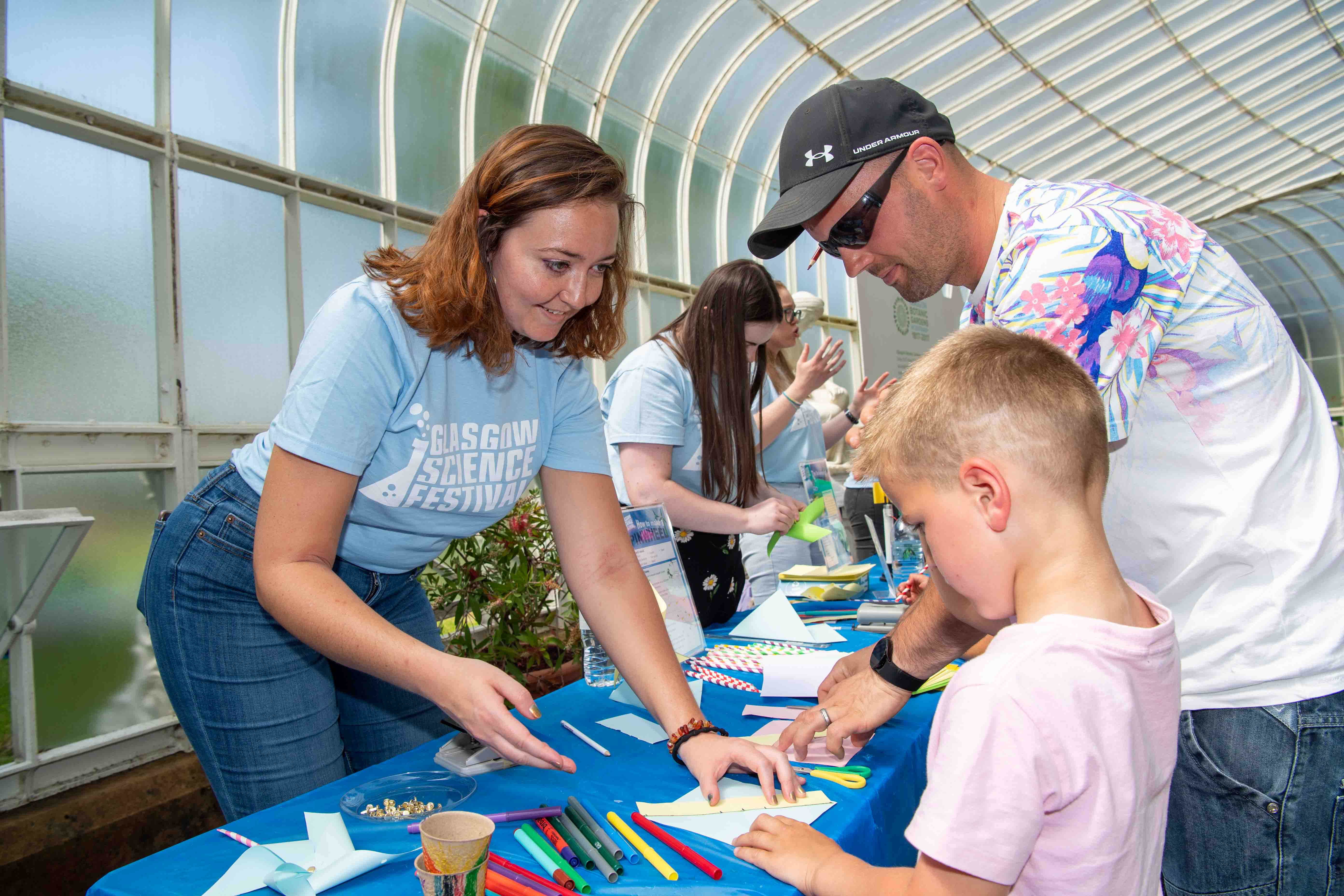
Thanks to Lindsey, Prashansa, Mairi, Claire and Frances for a creative and educational set of activities.


